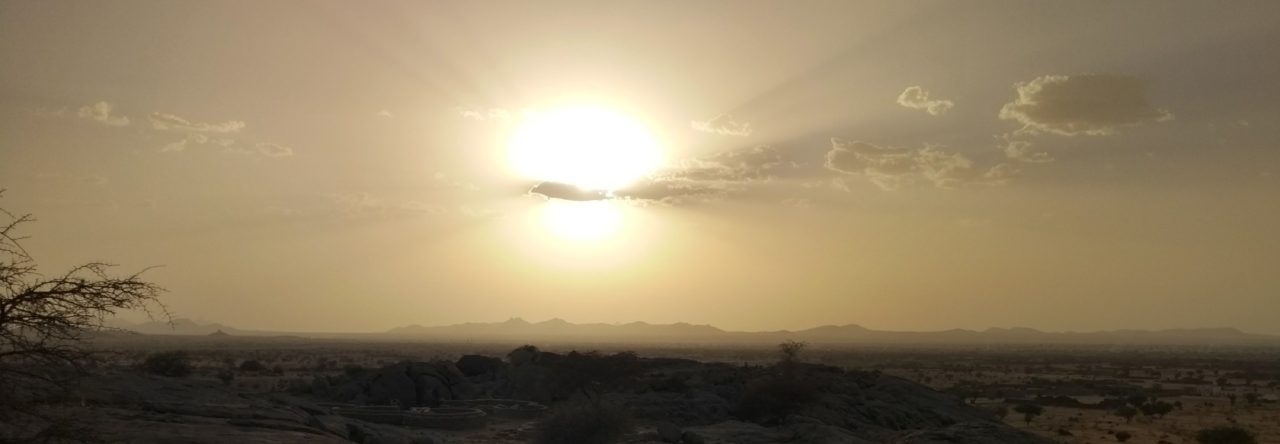This post is from our trip to the village in December…
Saturday, we traveled 40 minutes to a nearby town, HH, and got to visit with two other American ladies as well as visit the weekly market to see what foods are available there. We also brought a carful of village women who brought hugs sacks of peanuts from their fields to get ground into oil they can then use for cooking at home. Market day is an all-day affair. We left around 9 and got back right at sunset that day.




Lynzee, the kids, and I got to visit the close-by wadi (dry river bed) a few times to try to catch fish, look out for monkeys, and collect guavas from the trees. We also took a short walk out of “town” to see the recently completed schoolhouse made of dried millet stalks. The village men recently made a plan to start a French school for boys and girls that would require almost nothing from the village parents. The men have collected money, hired a teacher from N’Djamena, and built a building. They plan to start classes very soon.
We also took a 15-minute drive to a neighboring village on it’s weekly market day. I loved seeing the donkeys and horse carts arriving to market. The kids stayed at the shady wadi for a nature walk amongst the mango trees with Lynzee while I ventured into “town” with two of my local friends to get an idea of what things were available. I was pleasantly surprised to find bananas and watermelon amongst other dried goods.
I spent one afternoon in a different neighboring village with my Abeche house helper visiting many of her relatives. It was a good time to catch up after being gone for “two rainy seasons” as they informed me, and to further the relationships there. Maybe it could be a place for future teammates to live or for future work to be done? If you ask the kids what their favorite parts of their village time were, they’ll give a variety of responses: making friends, fishing, visiting the wadi, going on visits in the village, playing with a little puppy, riding a donkey, sleeping in a hut or grass shelter, amongst other things. They did well at embracing a completely Chadian life from eating only Chadian food (millet paste and sauce, mostly) all week to using a Chadian bathroom to remembering to kneel while greeting visitors in the local language who came all throughout the day. I was very encouraged by their contentment even when things were so different and often less convenient or comfortable.



















































































